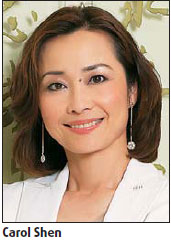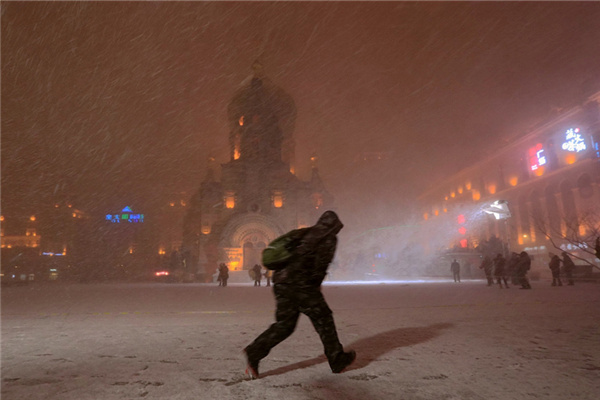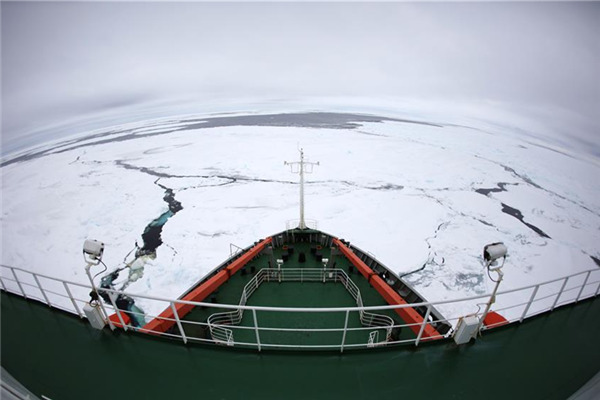


For Leonard Lauder, son of Estee Lauder and the second-generation chairman of Estee Lauder Group, his first trip to China also marked a brief glimpse of the cosmetic giant's development in the country.
That was in the 1960s, when Lauder was walking in Shanghai and was disappointed to see hundreds of people dressed uniformly in blue or gray cotton shirts and trousers. However, when he spotted a piece of red lining in a woman's blue coat, he foresaw the great thirst for fashion in China.
Driven by Lauder's discovery in 1993, the US firm launched its first in-store counter for its skincare products in Shanghai.
To date, the US firm's eight brands, including Estee Lauder, Clinique, La Mer, MAC and Bobbi Brown, have become a great force in China's beauty world, with the market share standing between 25 to 30 percent in the upscale cosmetic sector.
Compared to its average market shares in other Asian markets, which is between 18 to 40 percent, "China has been giving us more confidence to maintain our leadership here over the past 15 years," said Carol Shen, managing director of Estee Lauder China.
Ambitious expansion

But Shen stressed the most significant turning point for Estee Lauder's development in China came in 2002, when the group decided to build up a subsidiary. Before that, its business was only operated by a sales agency running less than 10 counters across the country.
Shen cited some figures to explain the company's "turning point" to China Business Weekly during a recent interview: From entering China's market in 1993 to the end of 2001, the US cosmetic maker established less than 10 counters in the country. But between 2001-2008, the number of counters was increased to 193 in 33 major cities in China, all selling its five brands of cosmetic products and three fragrance products (Aramis, Tommy Hilfiger and DKNY).
Among them was also the company's top-end brand La Mer that came into China's market four years ago, driven by the successful performance of Estee Lauder and Clinique.
"The action of establishing a company here obviously showed our goal of truly laying our roots in the local markets and serving local consumers," Shen added.
Driven by it in the last seven years Estee Lauder China has been growing around 20 percent faster than the company's average growth in its overall market, which goes between 28 to 35 percent annually, according to the company's figures.
"In five to eight years the sales in China's market will overtake Japan, and become the largest market in Asia-Pacific for us," said Fabrice Weber, president of Estee Lauder Companies Asia Pacific.
Shen said that the decision to move was also motivated by a desire to better integrate with the unique elements of Chinese medicine.
"For a US firm, after entering into China for many years Chinese culture is seen as a huge treasure by us, especially for its medicinal elements," Shen explained.
Hence in 2005, the company established its sixth research center in Shanghai. The 857 sq m center, called Innovation Institute, has four functions for biology research, treatments, make-up and package testing.
It was a platform, said Shen, for getting close to the local culture, and working in partnership with Chinese research laboratories and hospitals to provide better services for local consumers.
Shen also revealed some ambitious expansion plans for Estee Lauder in China - targeting the 62.5 million Chinese women consumers, and introducing three more skincare brands in the coming 18 months.
"Compared to our current approximate 25 percent of share in China's market, we hold great confidence for the further development of fashion industry here," Shen said.
Listening to locals
However, the managing director also noted she felt challenged by rapid development of China's cosmetic industry.
Shen citied some figures that in 1980s, the country's total sales of cosmetic products were less than 200 million yuan, but in 2007, the number increased to 70 billion yuan. Furthermore, it is estimated to climb up to 100 billion yuan by 2010.
She said the pace has Estee Lauder China readjusting its strategy for getting close to local consumers,.
"After seven years of being in charge of Estee Lauder China, I have witnessed the growth of fashion industry from consumers admiring the top-end brands to seeking better performance, higher quality and product safety," Shen said.
For example, after many years' research and marketing experiences, many Estee Lauder whitening and clarifying products were only sold in China. And the company had invested the most in China to educate 1,200 high standard beauty advisers.
Another direct result for the growth of local fashion industry is that more consumers use diversified channels for testing a cosmetic product.
"In the past, to spread our new products, we only advertised on TV or in fashion magazines. But now, if we aren't paying more attention to the Internet we may lose a large share of the market," Shen said.
"In this highly competitive market what will never change is our insistence on providing higher quality products," she added.
(China Daily 01/12/2009 page7)













